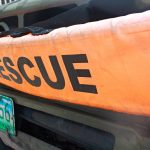In part 1 of our 2 part series, this writer discussed tips discussed by Jerry Carual, Founding President of SARUF (Search And Rescue Unit Foundation, Inc.,) on keeping your family safe during disasters. In this final part of the series, we’ll tackle common mistakes and safety tips.

The biggest mistake committed before disasters occur is preparing for only one kind of disaster. As we all know, disasters are varied and almost always come without warning. We must be prepared for any event, be it a flood, fire, earthquake, or accidents.
Other mistakes include: 1) Running out of or not stocking up on medicine. In case this happens, Carual states that it’s best that one familiarizes oneself with plants and their medicinal purposes. 2) Talking too much about your plans. When it’s every man for himself, be prepared for a struggle if you’ve been telling all and sundry that you’ve stocked up on supplies. 3) Not having a plan. 4) Not evacuating when evacuation is the only option left. 5) Neglecting home security. 6) Not purifying water before drinking. 7) Breaking the law. When order is finally established, you might find yourselves accountable for mistakes you’ve made while in a state of panic.

Here are a few other tips and things to keep in mind:
1) Movement is the key to survival. As long as you are strong enough to move, you must continually move to get yourself out of danger.
2) The Triangle of Life (TOL) is still valid in a country like ours where building codes are not strictly followed and the quality of construction materials used are questionable. To execute the TOL, brace your back against a sturdy object and drop to a fetal position.
3) Keep in mind these two after-survival or after-disaster threats: hunger and people, it will be every man for himself, be prepared to defend the resources that you are left with.
4) When indoors during an earthquake, remember that the wall is your lifeline. If executing the drop, cover, hold, Carual emphasizes to add an extra step: drop, cover, hold and push the table you’re ducking under to the wall. Or drop, cover, hold, and crawl to the wall.
5) An alternative to the hands-over-head posture during earthquakes is the tripod position. It is similar to a runner’s starting position during a race, wherein one leg is on a kneeling position, one foot is on the ground and one (tripod) or both (quadpod) hands are on the ground as well. This way, you are ready to move should danger present itself and your peripheral vision is not compromised.

The type of seminar attended was a one-day, family-centered one with applied experience-based training and sharing of testimonies by actual survivors. The event was capped off with a realistic simulation of an earthquake, wherein participants had to crawl their way to safety in total darkness accompanied by actual, deafening earthquake sounds; all while trying to calm down your child who was going through the simulation with you. It might have been just a simulation, but it was no cake walk, trust me. Should you, your company, or school wish to invite SARUF to conduct a similar seminar, you may get in touch with Jerry Carual via these numbers: 09082918286 / 09234688666 / 025451807. Or visit the SARUF website at www.saruf.ph

Part 1 of the Disaster Preparedness Series.



One Comment